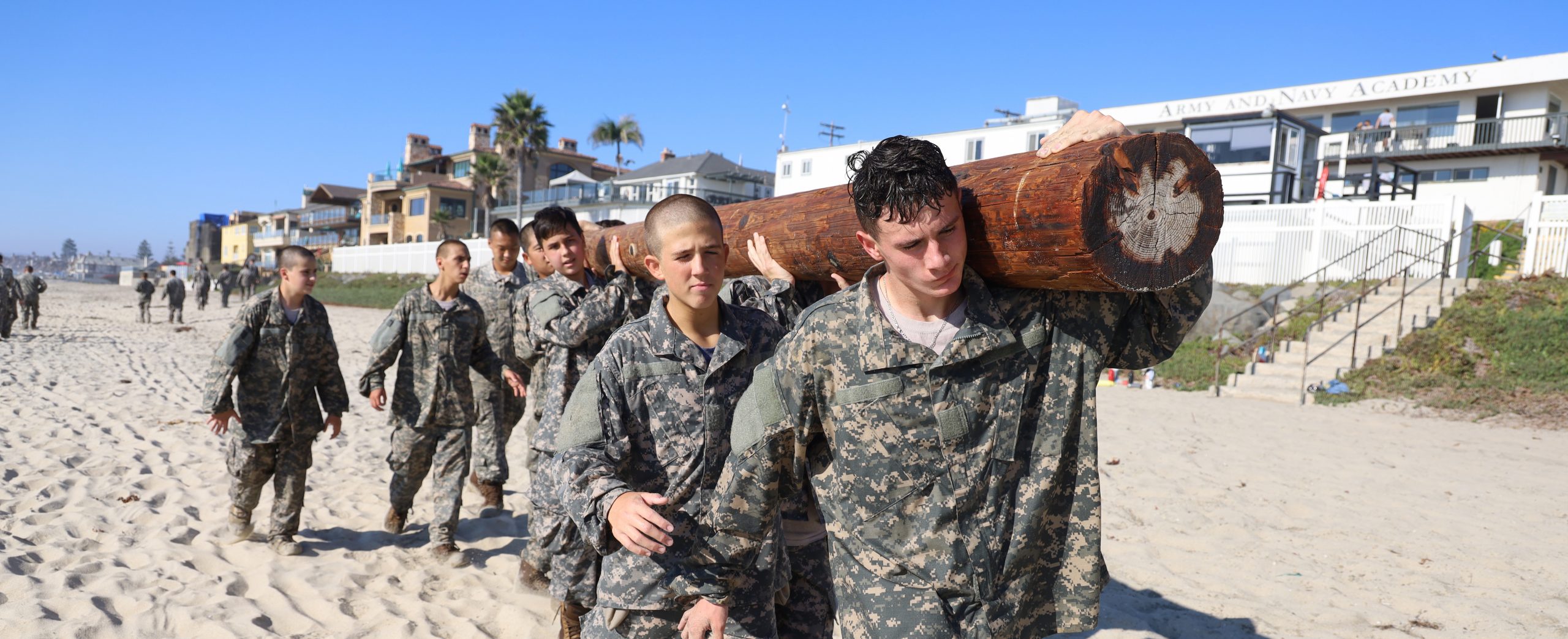
Junior Reserve Officer Training Corps
The JROTC program will help you discover yourself, forge strong friendships and reach your leadership potential. By following a structured schedule, achievement of goals, and mastering the principles and practices of followership / leadership, you will transform your character and outlook on life. Regardless of where you go to college or your future career choice, this nationally recognized program will help you become more prepared for life. Contact the Office of Admission to explore JROTC at Army and Navy Academy, a military school for boys in grades 7-12. Boarding and Day options are available.
The mission of JROTC is to motivate young people to be better citizens. By acquiring and exercising both individual and organizational values, skills and abilities, cadets at Army & Navy Academy have a opportunity to learn insightful life lessons and grow (through practical application) from the top leaders in our military ranks.
College Bound or Service Bound. While the vast majority of graduates attend public and private universities, some Army & Navy Academy graduates continue their military interest by attending the top military service academies like West Point and Annapolis or enroll at ROTC (Senior Reserve Officer Training Corps) universities. A small percentage choose to enlist in one of the branches after graduation.
Creating Tomorrow’s Leaders. For over a century, our alumni have made significant contributions and advancements in fields, including: business, science, engineering, technology, medicine, law, government, military, education, and the arts. Regardless of the path you choose, the life skills learned in our JROTC program are applicable to college readiness and career development.
Structure, Motivation, and Self-Discipline. The JROTC Program at Army and Navy Academy offers a well-defined organizational structure that embodies selfless service, fosters mentorship, and cultivates a sense of brotherhood. Focused on values and professionalism, we will support you as you define your personal path and grow as a leader.
Leaders Take Charge. All cadets are a part of the student-led cadet chain of command. Every day, these young leaders exercise their leadership skills by leading the Corps of Cadets at our military boarding school for boys. Each cadet participates in a variety of prescribed activities aimed at improving mental, social, spiritual and physical fitness.
Honor Unit with Distinction. As an Honor Unit with Distinction, the highly respected JROTC program at the Army and Navy Academy gives our students the opportunity to live and personally develop in an educational setting where they routinely observe and practice leadership. Guided by our retired officers and stellar staff, these men will guide you through your individual professional development. Nationally recognized as an Honor Unit with Distinction by the National JROTC.
Real World Life Skills. Since leadership is expressly known as both an art and science, cadets at our military school geared for boys learn an abundance of life skills, related to both aspects. These skills include: critical and creative thinking, learning about leadership styles, improving time management, organization, how to prioritize tasks and set goals, as well as how to communicate effectively. These lessons and exercises allow you to refine your skills/abilities as you pursue leadership roles and play an instrumental role in the governance of our campus. They are highly applicable to your life far beyond high school.
Interested in exploring how a West Point-style education can shape and change your life?
Contact the Office of Admission Now at (888) 762-2338. For more details about admissions, you can also view our admissions overview.
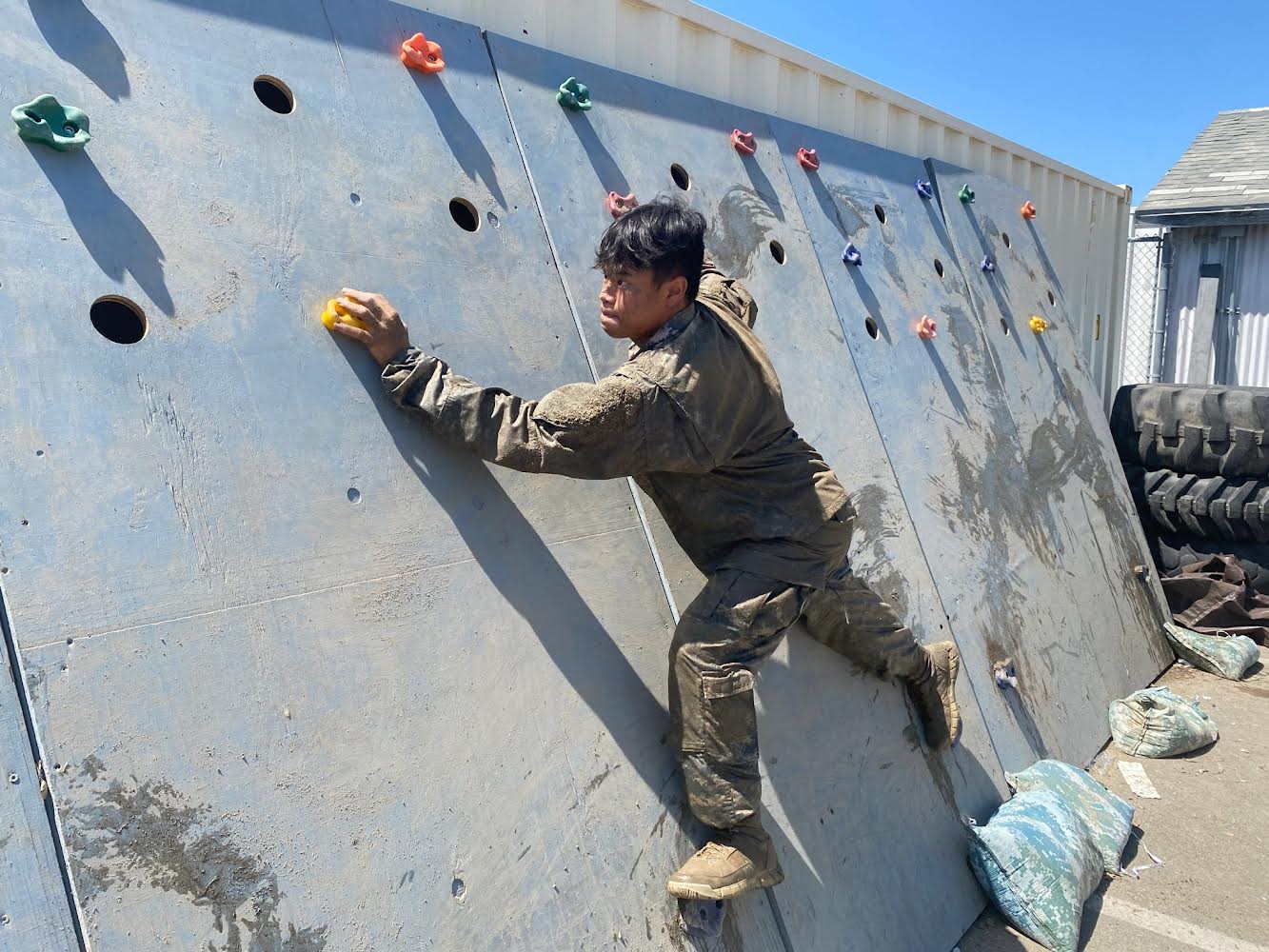
What is the difference between JROTC and ROTC?
One of the key differences between JROTC and ROTC is that one is intended for middle/high school students and the other is a higher education (college/university) program.
Both programs include leadership training, character development, life skills, and citizenship; however, college students attending an ROTC university are specifically being trained to become future military officers.
JROTC is not to promote enlistment, but to inspire and train students to be good citizens.
JROTC – “As congressionally mandated by Title 10 United States Code, Section 2031, each military service must have a JROTC program to instill in students in United States secondary educational institutions the values of citizenship, service to the United States, and personal responsibility and a sense of accomplishment. JROTC’s mission, “To Motivate Young People to be Better Citizens”, is the guide post for the program’s success. – U.S Army JROTC
ROTC – “The Reserve Officer Training Corps (ROTC) is a college program offered at more than 1,700 colleges and universities across the United States that prepares young adults to become officers in the U.S. Military. In exchange for a paid college education and a guaranteed post-college career, participants, or cadets, commit to serve in the military after graduation. Each Service branch has its own take on ROTC.”- Today’s Military
Read our article to learn more about JROTC and ROTC differences.
Does this military academy give cadets a competitive edge to get into West Point, Annapolis, or a service academy?
Attending the Army and Navy Academy has had a huge impact on cadets whose goal is to matriculate to a top service academy.
Since 1910, we have had seniors accepted to the top military service academies. We assist with college planning services, applications, letters of recommendation, and much more.
Our retired military officers and stellar faculty/staff on campus also help boys “learn the ropes” before they head off to one of the top service academies.
The academies are as follows:
- US Military Academy — West Point, New York
- US Naval Academy — Annapolis, Maryland
- US Air Force Academy —Colorado Springs, Colorado
- US Merchant Marine Academy — Kings Point, New York
- US Coast Guard Academy — New London, Connecticut
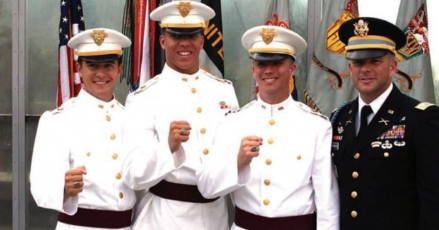
Who should we call to explore or schedule a campus tour?
Interested in exploring how a top military boarding school modeled after West Point can shape and change your son’s life? Contact the Office of Admission Now! (888) 762.2338.
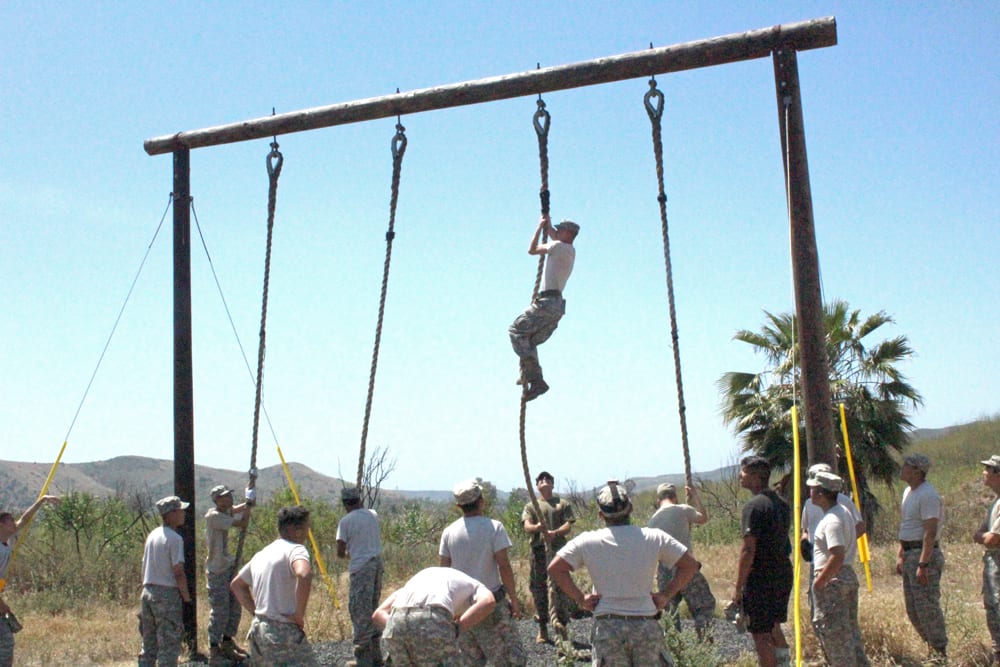
Is this a military boarding school? May I attend as a day student if I live locally?
Army and Navy Academy is primarily a private military boarding school; however, we also offer a day option for local students. Approximately 90% of our students board on campus and 10% live at home.
Are military schools only for military families? Do you push students to enlist in the military?
Military schools/academies are for families from diverse backgrounds. Many of our families at Army and Navy Academy work in a variety of fields including: business, science, engineering, technology, health, education, diplomacy, entertainment and many other industries.
There is no requirement for families to be in the service or demonstrate a history of military service. Of course, we appreciate our veterans! Since 1910, we have had a long line of admirals, generals, colonels and other high level officers who have worked at Army and Navy Academy.
Students are not pushed to enlist. While some choose to attend a service academy or ROTC university, Army and Navy Academy is college prep school. The majority of graduates attend traditional 4-year universities; however, all students benefit from the combination of college prep and service academy prep infrastructure.
Military Family? Contact the Admission Office to learn more. We offer military discounts and a special scholarship program for Gold Star families through NewDay USA.
What are the JROTC program requirements?
At the Army and Navy Academy, all cadets participate in the JROTC program.
The benefits of JROTC extends to all students as it involves strong preparation for college and life. It is also a competitive edge for admission to an ROTC university or military service academy.
In fact, most students at Army and Navy Academy attend traditional colleges and universities; however, they gain from the many benefits JROTC offers.
Some of the benefits that alumni cite include:
- Learn how to lead and follow
- Become a strong team player
- Gain leadership and management skills
- Develop confidence and self-discipline
- Acquire financial and real-world skills
- Project and time management
- Executive function skills in decision-making and judgement
- Develop strong communication skills
- Give back to your community and serve others
- Enhance college applications and scholarships
What is the JROTC Curriculum?
Classroom JROTC lessons at Army and Navy Academy focus on topics such as: leadership, health and wellness, first-aid, etiquette, fitness, history, government, geography, verbal and written communications, emotional intelligence, responsibility, and maturity.
A variety of technologies are employed both inside and outside the classroom to motivate and enhance learning. In addition, at Army & Navy Academy, electives in computer science, cyber security, and aviation are quite popular with the cadets and complement lessons learned in JROTC classes.
The JROTC curriculum is accredited and integrated at the Army and Navy Academy into the list of credit courses. The Academy follows University of California’s rigorous academic requirements, so students have a wide range of education options upon graduating. See our college matriculation for a list of colleges, universities, and service academies.
Most of our students apply to traditional colleges and universities; however, some apply to ROTC universities and to the military service academies. A small percentage of students also choose to enlist, take a gap year, or attend a trade school after graduating.
At what ages and grade levels can you join JROTC?
JROTC is designated for some middle schools and all high school students can participate.
At Army & Navy Academy, the program focuses on grades 8-12, but younger students at Army and Navy Academy begin preparing in grade 7. They have a chance to interact with top leaders, do daily formations, and begin learning about leadership early on in preparation.
What ages are allowed in JROTC? Cadets can be as young as 11 and up to 18 years old. Refer to the levels to find out more.
Where is JROTC at Army and Navy Academy located?
The JROTC Program is located on the Army & Navy Academy campus in Carlsbad (San Diego County) on a 16 acre beachfront boarding/day school campus. Cadets take classes as part of their academic schedules, participate in drills, formations, military reviews (parades), Officer Candidate Course training (off site), and leadership training.
What is Leadership Education Training?
Learner-Centered Education
The JROTC curriculum is based on the principles of performance-based, learner-centered education. It is linked to the McREL (instructional leadership resource) national standards. Every lesson and assessment actively engages students in higher-order thinking and skill performance.
The program of instruction provides the flexibility to link the standards for elective credit and additional credit in subject areas such as: physical education, health, wellness, life management skills, freshman orientation, government, civics, practical and performing arts, careers and so forth.
Leadership Education Training (LET/JROTC) Classes
The LET curriculum is mandated (via U.S. Army Cadet Command) and tailored to meet the needs of our cadets.
Army instructors customize their curriculum in order to promote both individual and collective growth, leadership development, as we value the history, responsibilities, opportunities, rights and challenges of our nation.
While actual classes take place daily in LET as part of the curriculum, the lessons extend beyond the classroom into everyday cadet life. At the conclusion of the academic day, your Trainer, Advisor, Counselor (TAC Officer) will support and guide your daily activities, including: fitness, nutrition, hygiene, teamwork, social interactions, and help you improve life and study skills.
LET LEVELS
Army and Navy Academy awards credit toward graduation for each year of the JROTC program, consisting of four levels of Leadership Education Training (LET) instruction. Each LET level must total 180 academic hours.
Cadets begin at the LET I level: Leadership, Education, and Training and then move through the levels until they progress to the LET IV level.
Some adjustments have been made to the JROTC levels, so the grades associated with each level are now reflected below:
Level 1 = 7th & 8th grade
Level 2 = 9th grade
Level 3 = 10th grade
Level 4 = 11th grade
Level 5 = 12th grade
How are leaders selected at Army and Navy Academy?
Leadership Selection: A highlight of the year is when our military school participates in a challenging leadership experience at the Marine Corps Air Station-Miramar, or the Marine Corps Base-Camp Pendleton.
Unlike most public or private schools, leaders at our military academy are not chosen by popular vote, but through a rigorous selection process. Cadets take exams, go through interviews, and face physical challenges as part of the selection process.
The Officer Candidate Course (OCC) is rigorous and demands a high level of motivation, self-discipline, and physical fitness.
~ Parent
“Our son attended the JROTC leadership summer camp and attended Army and Navy Academy for his senior year. The change in him is exactly what we have been praying to see. This is one of the best decisions that we have made and I personally believe that boys are missing out on a great opportunity to become men and leaders if they do not attend this amazing campus on the Pacific Ocean. I have not seen him this motivated and determined to succeed in years. Bravo ANA!”
